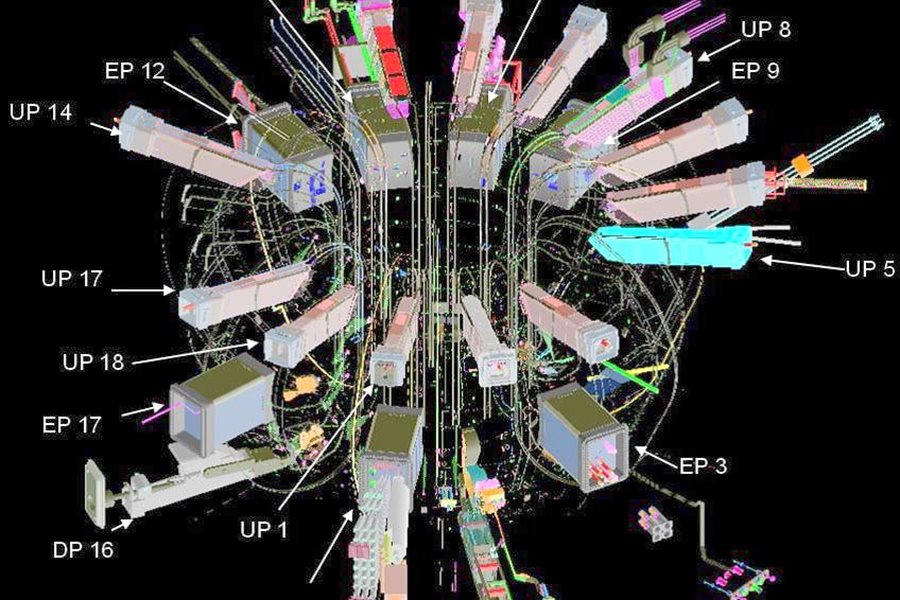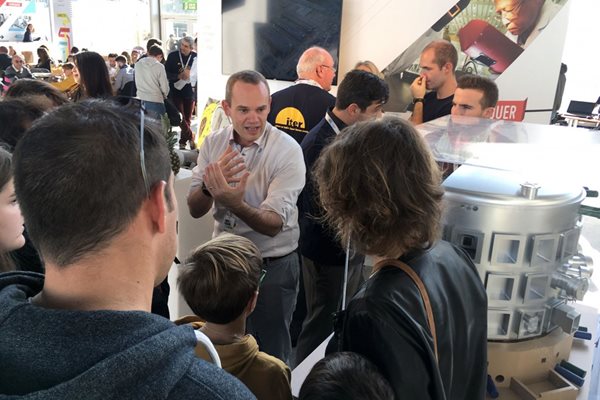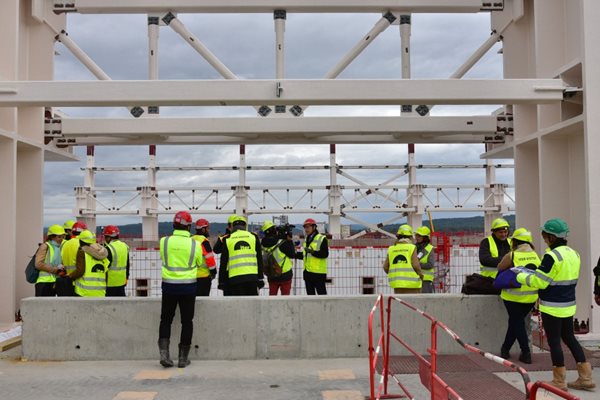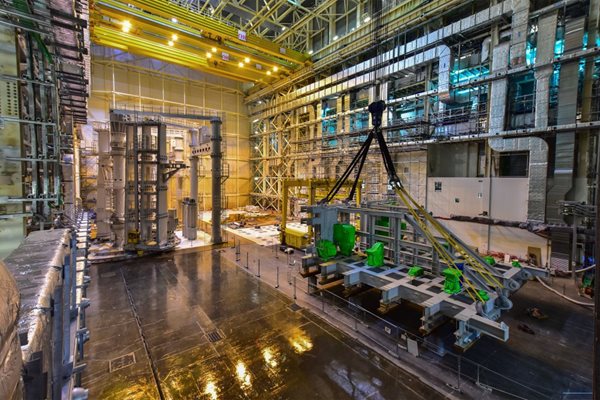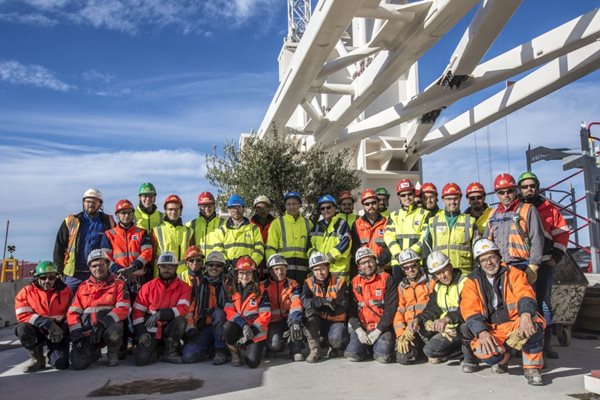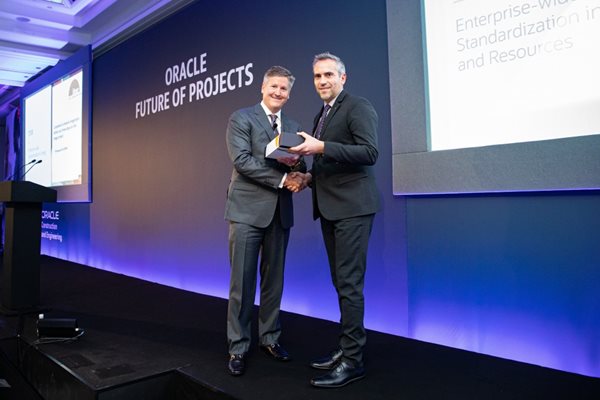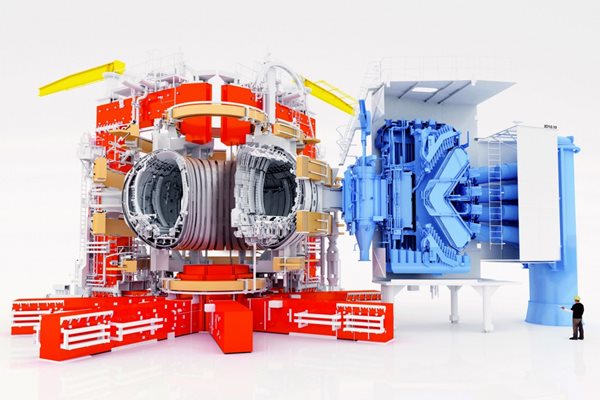
you're currently reading the news digest published from 11 Nov 2019 to 18 Nov 2019
featured6
of-interest1
press20
featured
Technology | The many wonders of ITER diagnostics
The eyes and ears of virtually all plant functions, ITER diagnostic sensors and accompanying systems will play an essential role at ITER. They will keep the reactor operating as efficiently as possible—and much more. Just like in a future commercial reactor, diagnostics on ITER will help protect the plant and optimize overall output. But in the unique environment of ITER—the first reactor-scale fusion device—diagnostic systems will also have access to an important testing ground, allowing for the demonstration of techniques that can be used later by sensors in commercial power plants, as well as the collection of data for physics models that will contribute to the overall design of commercial plants. Based on the past, but a leap into the future Most of the diagnostics at ITER are being designed based on what was learned at other experimental tokamaks. In a few areas, however, ITER is moving into unknown territory. One of these is the requirement for one-hour pulse lengths. This has never before been achieved. (The current fusion power pulse record holder is the European tokamak JET, which succeeded in generating 16 MW of fusion power for a few seconds in 1997.) 'To achieve such a long reaction time you have to control not only the shape of the plasma, but also the way the current is distributed between the core and the edge,' says George Vayakis, In-Vessel Diagnostics Section Leader. 'When we get that right, we can reach a regime where we have the ability to run the plasma for a very long time.' ITER Diagnostics is developing a number of innovative solutions to address other unknowns. For example, new techniques are being used to automatically align laser-based systems, and new methods are being developed to maintain the reflectivity of diagnostic mirrors, which guide the light coming from the plasma or from probing light sources through shielding towards detectors. Whether venturing into known or unknown territory, ITER diagnostics operate in a variety of modes. Some are active—for example, one system shoots a beam of particles into the plasma to interact with minute impurities, producing wavelengths that can be measured to unambiguously identify types of atoms. Others are passive. To detect sodium impurities, for example, sensors detects the wavelength that sodium emits in response to the ambient x-ray radiation that results from high temperature. Diagnostic systems also have different sensitivities—different time and spatial resolutions and different sources of error. Some of the sensors provide data in real time to other ITER modules such as the plasma control system; others provide data to be stored for offline evaluation. In all cases, the diagnostic systems time stamp data so it can be correlated with the data from other sensors. Different sensors have different measurement frequencies and produce different volumes of data—and sometimes the data rate can be very high. Cameras, for example, issue a huge volume of data. Whereas in many cases the service receiving diagnostic information wants all the raw information it can get; in the case of camera data, the data is generated at such a high rate that it is more practical that it be pre-processed before being sent to the recipient. For this reason, software on the diagnostics side processes the data before passing it along to the plasma control system, providing high flexibility in the management of the information. In ITER, most of the important parameters have to be measured more than once—and ideally using different methods. This provides a very important redundancy that will also be required of the sensors developed for the next-generation fusion power plant. 'Whenever you make a measurement there's going to be some error,' says Diagnostics Physicist Christopher Watts. 'The error may come from the uncertainty in the way you make the measurement, or it may come from the fact that the plasma is changing while you're making the measurement. Because the different diagnostic equipment has different sensitivities, you need multiple measurements to know what's going on.' Port plugs to protect sensor equipment In addition to performing a wide variety of functions to measure a large number of parameters, ITER diagnostics must be robust enough to provide service under extreme conditions for as long as the ITER reactor is specified to last: 4700 hours of operating time over 20 years. Scientists and engineers designing ITER diagnostics systems have to perform the balancing act of keeping the instruments safe, while at the same time ensuring they perform measurements. One way of striking this balance is by installing many of the sensors in 'port plugs,' minibus-sized containers inserted into one of 35 openings, or 'ports,' in the wall of the reactor. A port plug is full of shielding, with labyrinths in between the shielding to hold critical parts of the diagnostic equipment. One port plug usually carries several diagnostics. 'For maintenance, radiation-resistant robots will pick up the port plugs and deliver them to the ITER hot cell, where other robots will repair the port plugs and/or the instruments within,' says Victor Udintsev, Port Plug Section Leader. 'This transfer operation brings still another requirement concerning the robustness of the port plugs and the systems inside: they have to withstand the pressures of being moved without losing alignment, while at the same time being maintainable.' International project management Diagnostics is an area where all seven partners play an active role in design and manufacturing, which means a great deal of international project management is needed. One hundred separate projects are underway to develop 60 instruments and the accompanying housing. In all, the diagnostic equipment at ITER has to measure 101 different parameters. 'We're building a few of the instruments ourselves, but most of the diagnostics are being built by our Members,' says Robin Barnsley, leader of the Ex-Vessel Diagnostics Section. 'This means we have a constant flow of meetings—design reviews, design progress reviews—among these parties. While some of the early-need systems have been delivered already, we are mainly at the stage now where we're discussing the construction and delivery of the systems.' For diagnostics close to the plasma, there are special requirements for construction, materials, and assembly techniques—for example radiation tolerance, thermal conductance, ultra-high vacuum compatibility, resistance to large electromagnetic forces, and high reliability requirements. 'We are currently reaching the end of the design phase for many of our First-Plasma systems, and we're building them for delivery in the next two or three years. These will be installed on the machine to be run in 2025.'
Outreach | Industry really can be "extraordinaire"
'Great things are done by a series of small things brought together.' This quote, attributed to the Dutch painter Vincent Van Gogh, could have been the perfect slogan of this weekend's Extraordinary Factories (L'Usine Extraordinaire) event in Marseille. ITER was there. Today, the industries that drove the industrial revolutions in the 18th and 19th centuries are reinventing themselves to keep pace with the world of innovation and ever-evolving technologies. L'Usine Extraordinaire, a major exhibit that took place from 14 to 16 November in Marseille, France, offered members of the general public the opportunity to encounter close to 80 industry actors in just a few hours, each of them showcasing the ways in which 'big industry' is a source of innovation ... and exciting careers. Digitalization, the internet, big data, virtual reality ... these techniques are already revolutionizing production. A fourth industrial revolution is underway, and Industry 4.0 will require new resources to take on the jobs of the future. By showing that factories of today are nothing like factories of the past, the three-day L'Usine Extraordinaire event aimed its messaging at middle and high school students—the employees of the future—with hands-on displays, robotics, connectivity, simulations, mockups, conferences and videos all designed to stimulate interest in the wide variety of careers made possible by industry. At the ITER stand, a constant stream of visitors was welcomed by volunteer guides from the ITER Organization as well as representatives from three French companies with large contracts at ITER: CNIM, Daher and Air Liquide.
Tokamak Building | Civil works completed
The olive tree that stood for a few days at the top of the Tokamak Building marked the completion of a five-year effort by Europe and its main contractor VFR to construct the central building of the ITER facility*. On Friday 8 November, at the invitation of the leading partner in the VFR consortium, Vinci Construction, media came en masse to celebrate the achievement of this important milestone. Erecting the seven-storey Tokamak Building has required six million work hours, performed by approximately 850 workers since 2010. Some 105,000 tonnes of concrete, reinforced by approximately 20,000 tonnes of steel rebar, went into the building's construction. For Jérôme Stubler, president of Vinci Construction, the achievement stands at the crossroads of 'several beautiful stories in the fields of physics, of geopolitics and of human adventure.' Speaking to the media as 'a humble mason,' he expressed his 'pride and emotion' at contributing to 'the box that will host the fusion reactor' and hasten the realization of one of humanity's 'absolute dreams.' The construction process, which one of his deputies called 'a furious melee, but a coordinated and cadenced one,' rested on a 'nimble organization' that managed to integrate the design adaptations requested by the ITER scientific teams. Media representatives were impressed. ITER remains an abstraction until you get to see, with your own eyes, the size of the buildings and the complexity of the equipment. Passing through the Assembly Hall where the upending tool had just been delivered; climbing to the top of the Tokamak Building where tall pillars for the roof structure stretch toward the sky; standing in the depths of the Tokamak Building and peeking into the cylindrical space where the machine will be assembled ... the media was able to take the full measure of the complexity and ambition of ITER. In the days that followed, the experience translated into enthusiastic headlines and comments in the French press (see examples here). As one French TV channel stated, ITER is indeed 'the incredible reactor that aims to produce inexhaustible energy.' *The Tokamak Building is the central building of the Tokamak Complex, which also includes the Diagnostic and Tritium buildings. The VFR consortium (Vinci, Ferrovial, Razel-Bec) is the European Domestic Agency's contractor for the construction of the Tokamak Complex and eight other structures of the ITER scientific facility.
Assembly Hall | Another massive handling tool
Inside of the Assembly Hall, some of ITER's heaviest components will have to be raised ever so carefully from their horizontal delivery positions to vertical. This delicate operation is the job of the 'upending tool'—a large, sturdy steel frame capable of handling 440-tonne vacuum vessel sectors and 360-tonne toroidal field coils with utmost precision. Procured by Korea, the upending tool was delivered to ITER on 6 November. The 18-metre long, 14-metre wide frame came in two halves that are presently being assembled and positioned on dedicated base plates embedded into the building's floor. Contrary to the twin pre-assembly tools (SSAT), the upending tool does not feature any mechanical, electrical or hydraulic machinery. It is basically a steel frame, but a highly sophisticated one. 'The tool is huge,' says Assembly Support Section Leader Hyung Yeol Yang. 'Controlling the overall dimensions within tolerances of less than 2 millimetres was very challenging for ILJIN, the Korean manufacturer.' The tool is designed to handle two types of components that have nothing in common except their exceptional size and weight: 440 tonnes for a vacuum vessel sector, 360 tonnes for a toroidal field coil. Switching from one to the other will require a complete reconfiguration of the component's supports inside the frame. The tilt operations, with the upending tool and its load suspended to the hooks of the overhead crane, will need to be repeated 27 times in order to deliver vacuum vessel sectors and toroidal field coils to the pre-assembly tools. The process will be a slow one: up to three weeks to finalize each operation.
Image of the week | Time to celebrate
It is traditional, in the world of construction, to celebrate the completion of a house or building by placing a leafy branch on its roof or topmost beam. The practice—known as 'topping out'—originated in ancient Scandinavia, and was meant to appease the spirits who had been disturbed by the construction works. ITER being ITER, a simple leafy branch would not have been enough. The size of the Tokamak Building and the amount of work that went into its construction required something bigger and more spectacular. As a consequence, an entire olive tree (as ITER is located in Provence) was lifted to the uppermost level of the building to symbolize its completion. According to the European Domestic Agency, which is responsible for the construction of all the buildings of the ITER installation, 850 workers devoted six million work hours to the construction of the building that will house the ITER Tokamak. Now that concrete works have been finalized, a small team is presently busy erecting the steel structure that will top the edifice and allow for the creation of the crane hall above the assembly pit. On Wednesday 13 November, the team posed for this group picture with ITER Director-General Bernard Bigot; Buildings Infrastructure Project Leader for the European Domestic Agency, Laurent Schmieder; and Vinci Project Director Fabrice Lemaire.
Excellence | An award for ITER planning and scheduling
Early November, the ITER Organization was recognized for the 'innovative and forward-looking' digital management of its schedule by Oracle, whose Primavera software tool is used to plan and track approximately 270,000 activities. Since 2016, the Oracle Construction and Engineering Excellence Awards have celebrated project teams and individuals around the world that have improved the way they manage and deliver projects through digital transformation. 'The Oracle Construction and Engineering Excellence Awards winners represent organizations of all sizes that have demonstrated remarkable success from the digital transformation of their businesses across the project and asset lifecycle,' said Mark Webster, senior vice president and general manager, Oracle Construction and Engineering. The ITER Project Control Office uses Oracle's Primavera to standardize the planning and scheduling processes and best practices across the project, including the Domestic Agencies and contractors, with all parties using the same activity-naming convention, codes, work breakdown structure and calendars. ITER schedulers are able to integrate schedules for approximately 270,000 activities across the project within three days of receiving data, and provide standardized reports for all stakeholders. 'From significant productivity gains, to better payment outcomes across the supply chain, to unlocking project intelligence for smarter decision making, the improvements realized by these organizations underscore their leadership in driving project delivery forward, with benefits that extend to all stakeholders. We congratulate the honourees and are thrilled to recognize their accomplishments.' The award was presented to ITER Scheduling Responsible Officer Sebastien König on 5 November, during the Oracle Future of Projects 2019 event at the Royal Lancaster Hotel in London.
of-interest
JET tokamak: record heating power achieved
In November, record neutral beam power of 30.8 MW were injected into a plasma on the JET tokamak at the Culham Centre for Fusion Energy (CCFE). The new record was achieved during tests preparing the plasma scenarios required for JET's deuterium-tritium experiments in 2020, which aim to achieve high fusion power for a stable five seconds. Increased heating powers are crucial to achieving this target. Beams of neutral particles (known as neutral beam injection) are one of the main plasma heating schemes on fusion machines such as JET and ITER. As well as supplying most of the heating power, the injection of energetic particles also provides useful diagnostic data for physicists. CCFE's engineering team, which operates JET on behalf of European scientists under the EUROfusion consortium, has upgraded the neutral beam system from its previous capacity of 23 MW to a potential maximum of 34 MW. The extra power will support researchers using JET to simulate plasmas for the ITER Tokamak. Read the full article on the CCFE website here.
